IN TALKS with TRACKIE
11.02.25Talent: Trackie McLeod
Photography: Weronika Sikora
Styling & Words: Graham Peacock
Assisted by: Lewis Bremner & Tamara Turnbull
Growing up is an uncomfortable experience. Coming to terms with who you are, understanding where you fit in, acting like you’re someone you’re not. It’s a time most of us try to erase. Coming of age might often be a humiliating experience, but that’s also what makes it so funny.
In FRUIT, Trackie McLeod’s latest exhibition, the artist takes his experience of growing up gay in Glasgow at the turn of the millennium as a starting point for interrogating the amusing and embarrassing ways that boys and young men are expected to embody masculinity.
Football tops and pirated DJ tracks, souped-up Nissans and unhealthy doses of Lynx Africa. FRUIT is a satirical jab at late-nineties/early-aughts lad culture and a love letter to the queer kids who grew up mimicking and subverting it to get by. It’s touching and hilarious. On a practice-level, it’s dynamic and inventive. It’s a tribute to being Scottish and gay and the people who make accepting ourselves possible. It’s also very Trackie McLeod. Check out what he has to say about it.
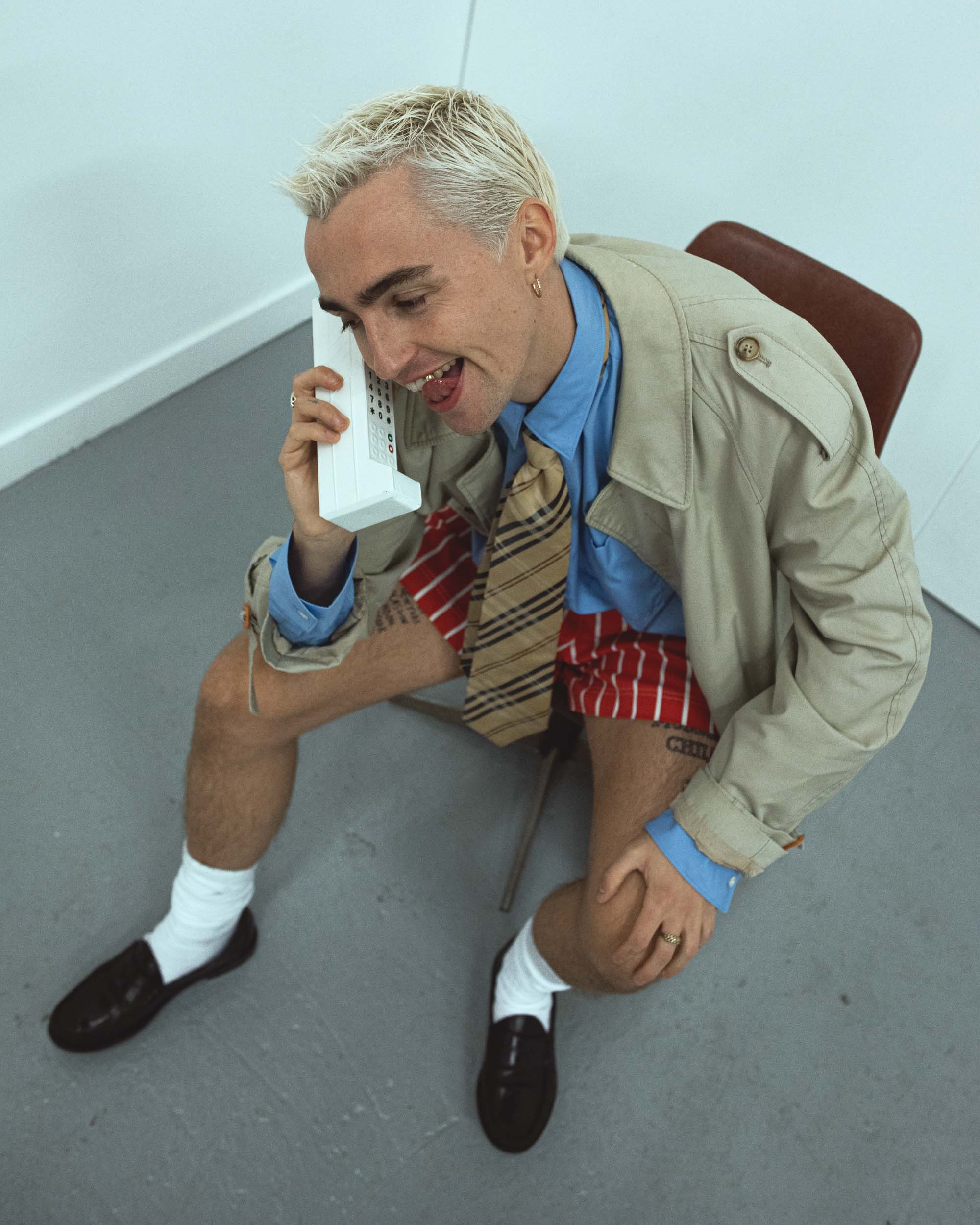
Trackie wears Comme des Garçons shirt from W2 and shorts by Adam Jones
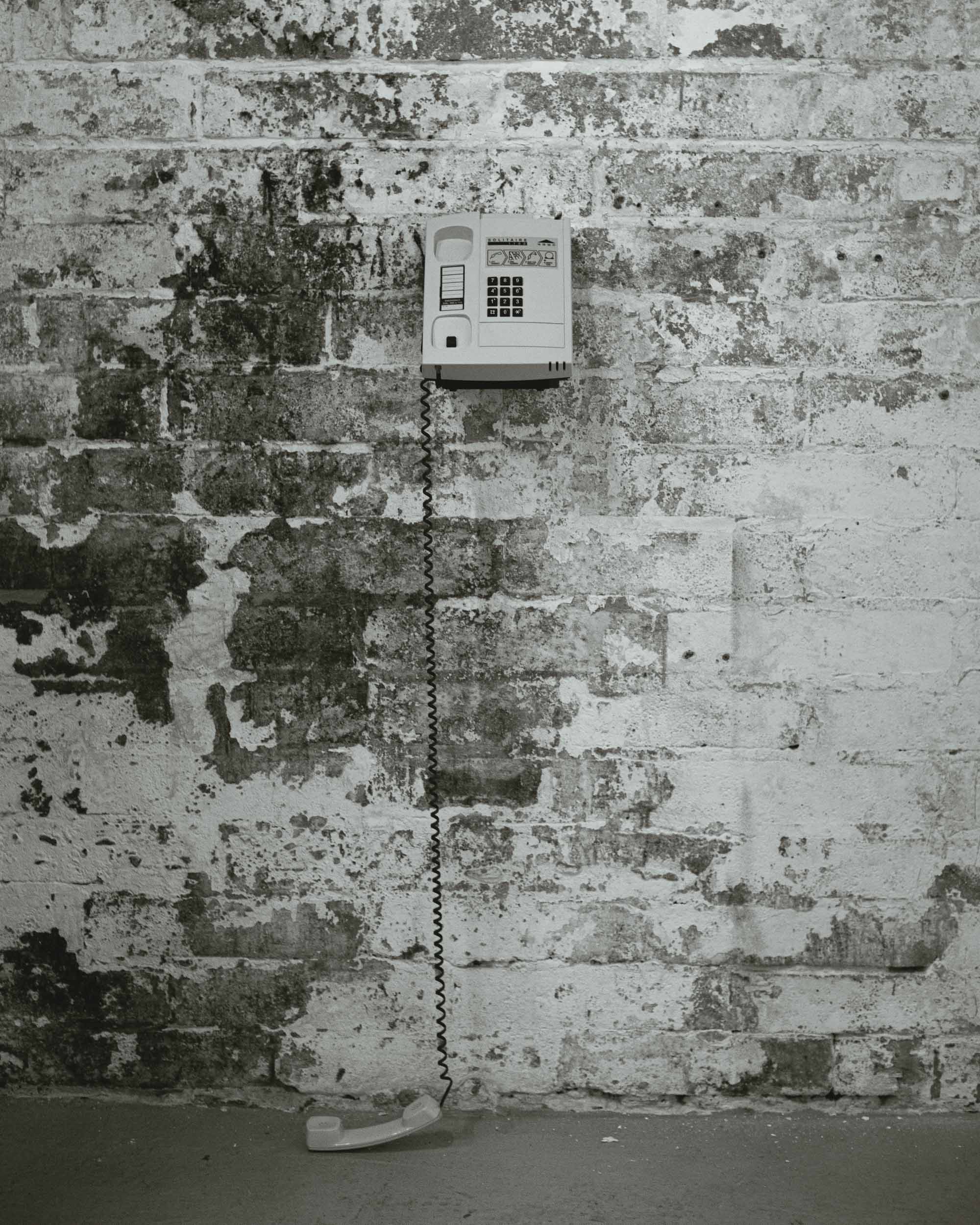
Walking through your exhibition reminds me so intensely of growing up in Scotland, from the language to the references to the specific sense of humour. Did you find yourself getting nostalgic when creating this body of work?
I always find the exhibition experience quite cathartic. It’s a way of storytelling that allows the viewer to come to their own conclusion, so I’m always glad when it resonates how I’d imagined. I’d say this time around, I used nostalgia more as a trope, a familiar way of setting the scene and involving the viewer in my thinking. FRUIT was more about reflection, thinking about my past experiences and emotions, good and bad, in relation to my queerness and what I’ve learned over the years.
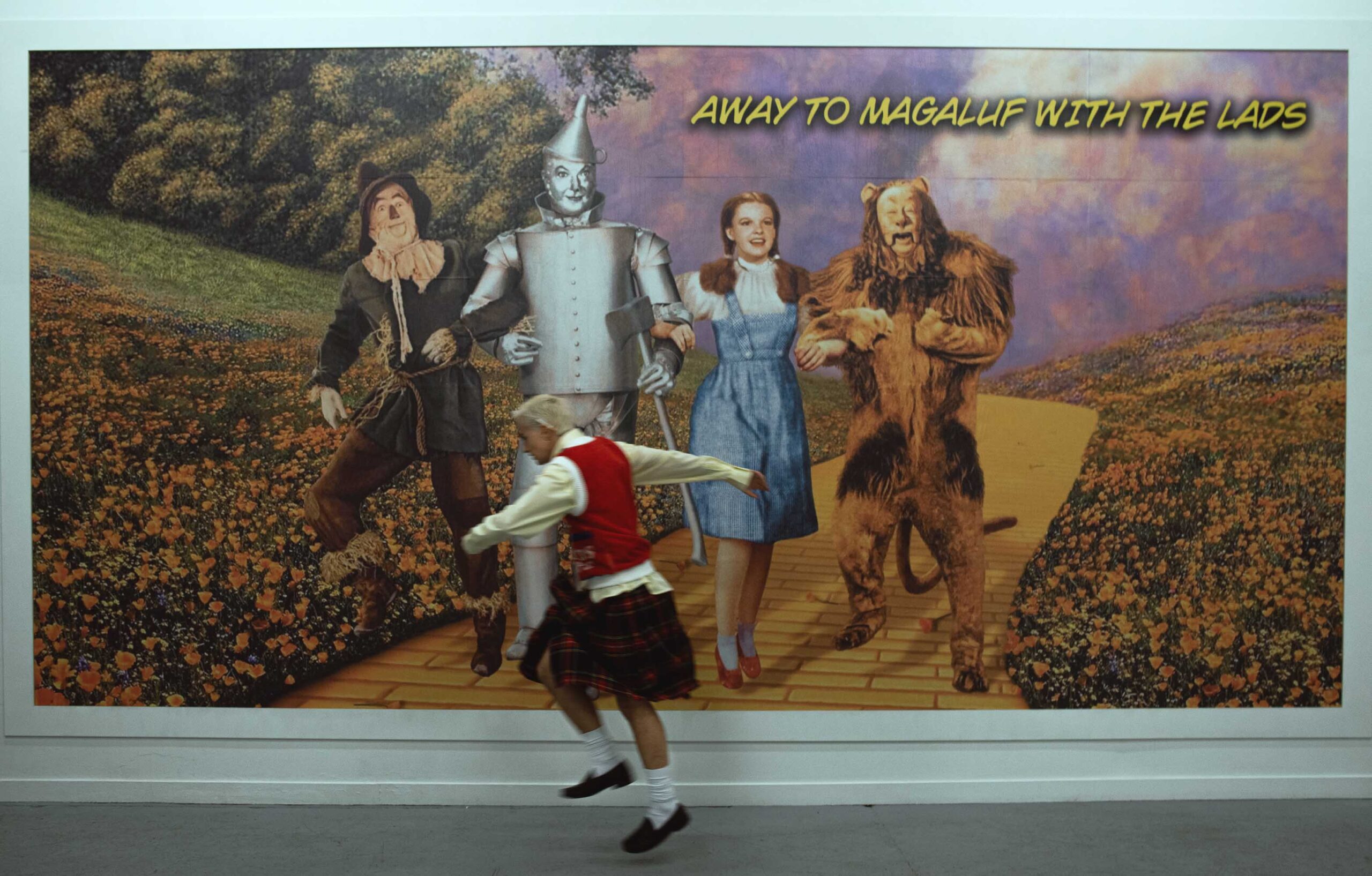
Trackie wears shirt and jumper by Adam Jones
What was the starting point for you in creating this exhibition?
A lot of the works had existed in the notes in my phone but I hadn’t quite connected the dots for it to become a cohesive exhibition. I think the starting point was going to see All of Us Strangers in the cinema. What a film man, it really moved me, (that much I went back to see it three times). It got me thinking about my own experiences growing up in Glasgow in the 2000’s and culturally what it meant and means to be queer in society. I was also interested in how we are shaped by experiences like being in the closet and coming out and knew early on I wanted to poke fun at those traditions. ‘The Six’ for example, is six screenprints onto metal with my signature Trackie Times headlines, each of them taking the piss out of the idea of coming out, begging the question ‘is it necessary?’.
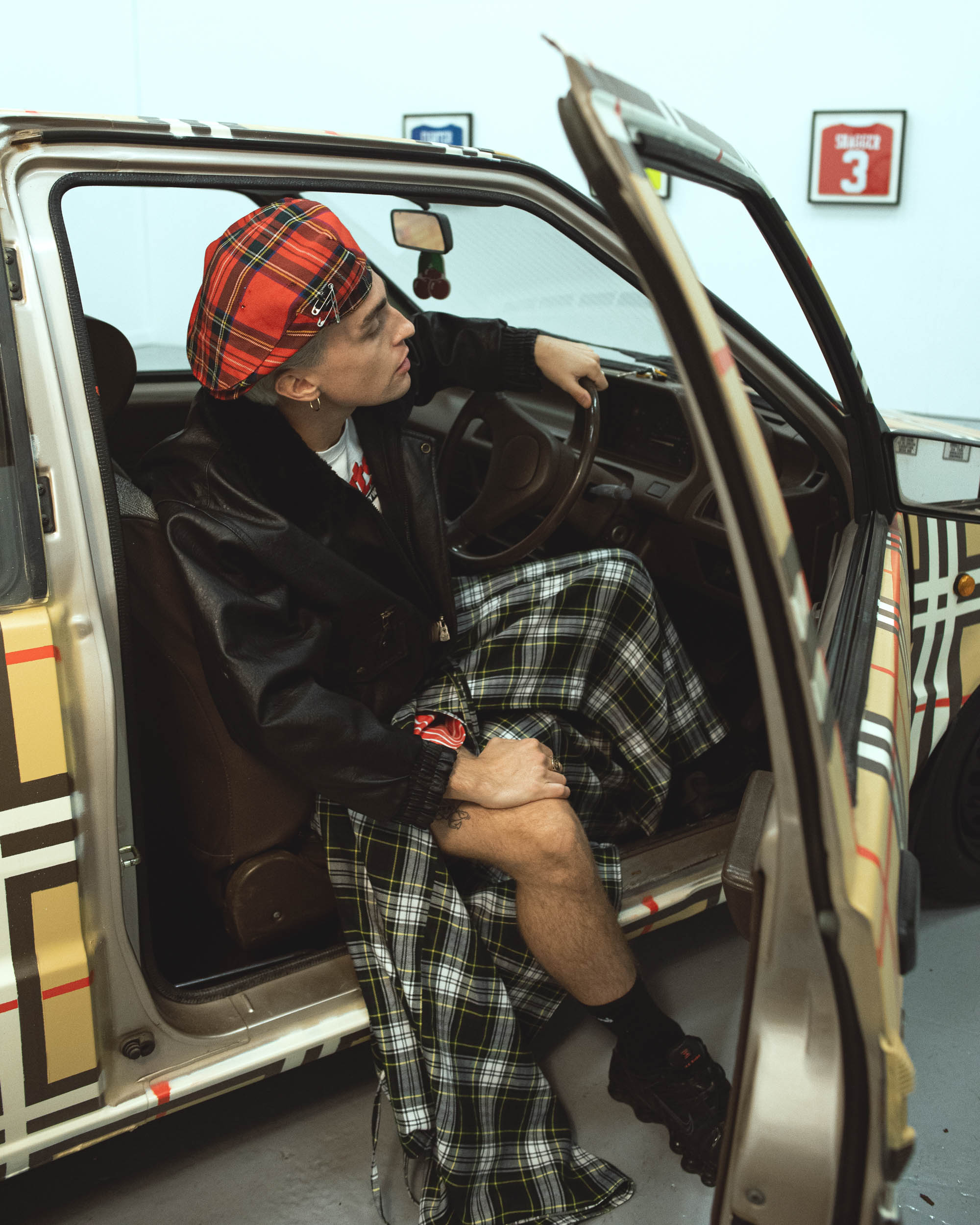
Trackie wears Annabel Stewart
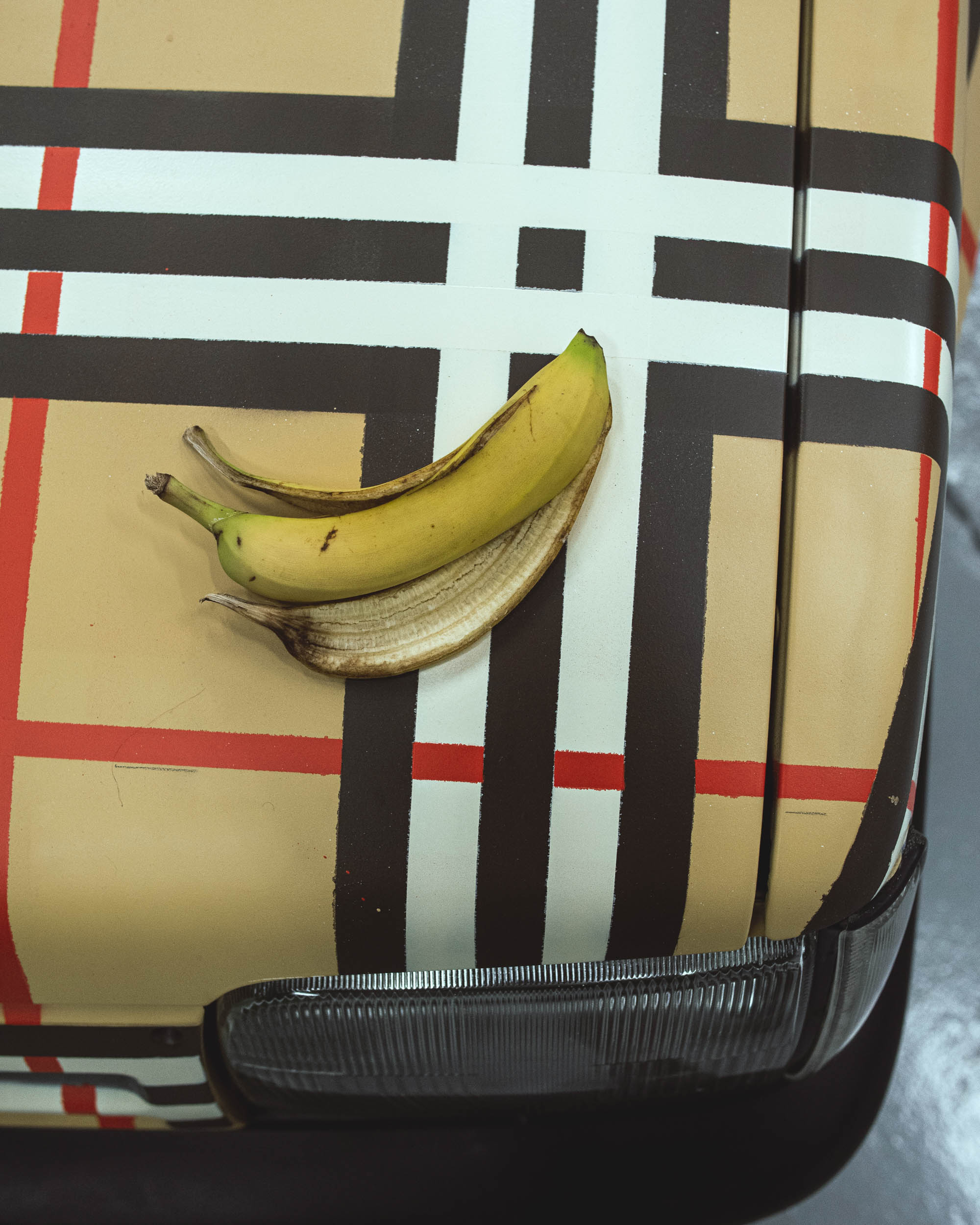
You cite Alan Downs’s The Velvet Rage as an influence here. It’s such a monumental piece of writing for gay men and our understanding of shame. I’m curious to know how reading the book shaped this exhibition.
I think shame is an emotion we rarely discuss as queer folk so that’s what I related to in The Velvet Rage. A lot of us grew up in an era when it wasn’t as accepted to be queer, often playing the role of a straight person to avoid prejudice or humiliation. The Velvet Rage explores ‘levels of shame’: why and how it manifests, and how to overcome it. These chapter headings inspired me to create work around each of the stages. For example, ‘Daniella’ is based on ‘compensating for shame’. As a teen you compensate your authenticity in order to blend in, i.e. follow the status quo, which is represented with the Burberry print. It’s then juxtaposed with the outdated Nissan Mirca to create a bit of conflict and conversation, standing out even when trying to blend in.
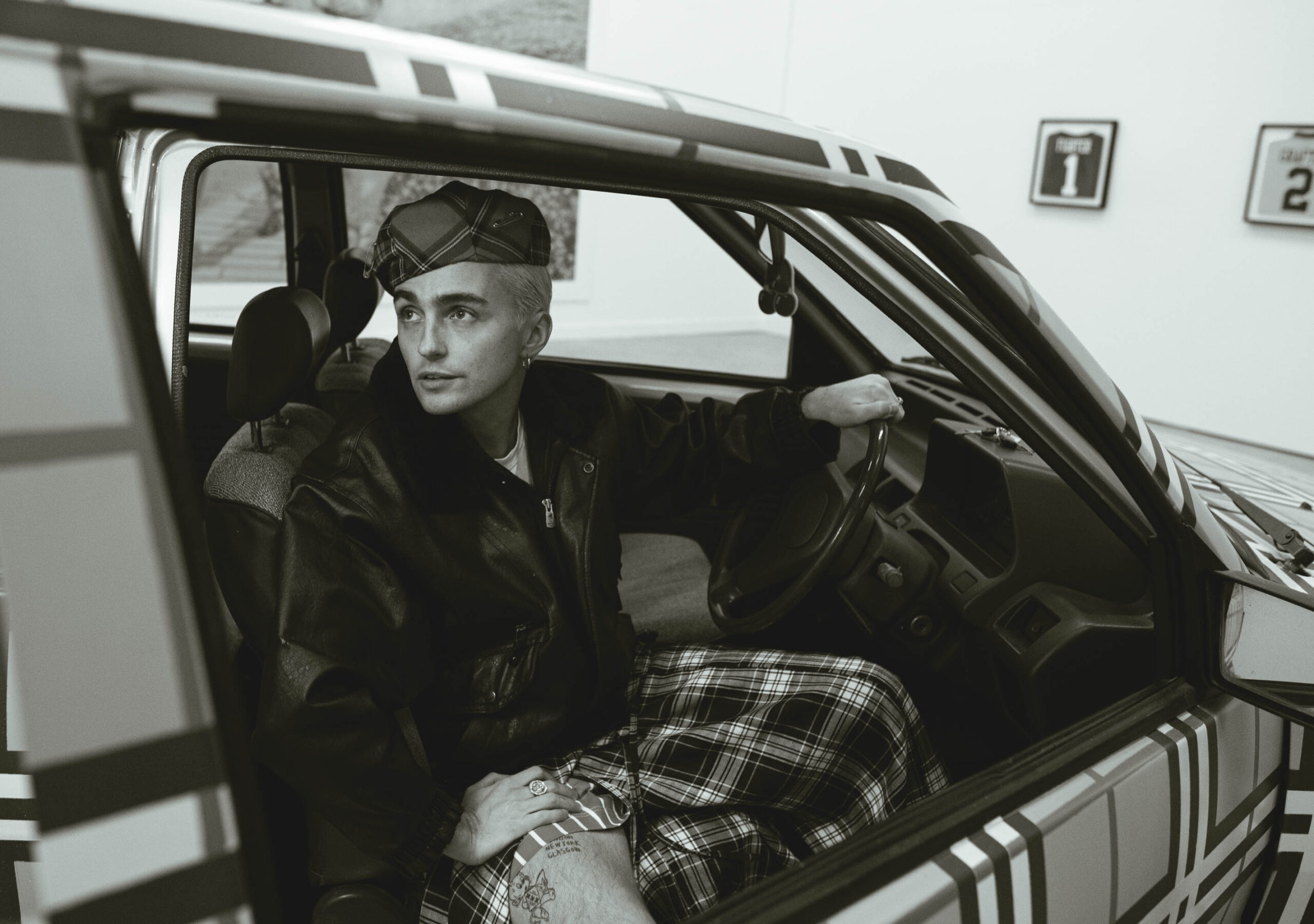
Trackie wears Annabel Stewart
Each work is named for a different woman who has inspired you. Is this a reference to women often being the first source of validation that gay men encounter, whether that be in real life or through pop culture?
You could say so, aye. Originally, I’d just named the car after Daniella Westbrook and her 2002 nova check outfit (Google it if you haven’t seen). Then I thought about the importance of the female idol, especially within my life. Growing up I always loved the female characters, especially the villains. I’d also been thinking about all the girls I hung about with growing up and how most of them had protected me and allowed me to flourish. The works sort of named themselves after that. Some are personal, like ‘Judy’ titled after my best mate and ‘Mary’ after my wee granny and then some not so like ‘The Six’ titled after the six women in Eastenders’ Christmas Day plot. As you do.
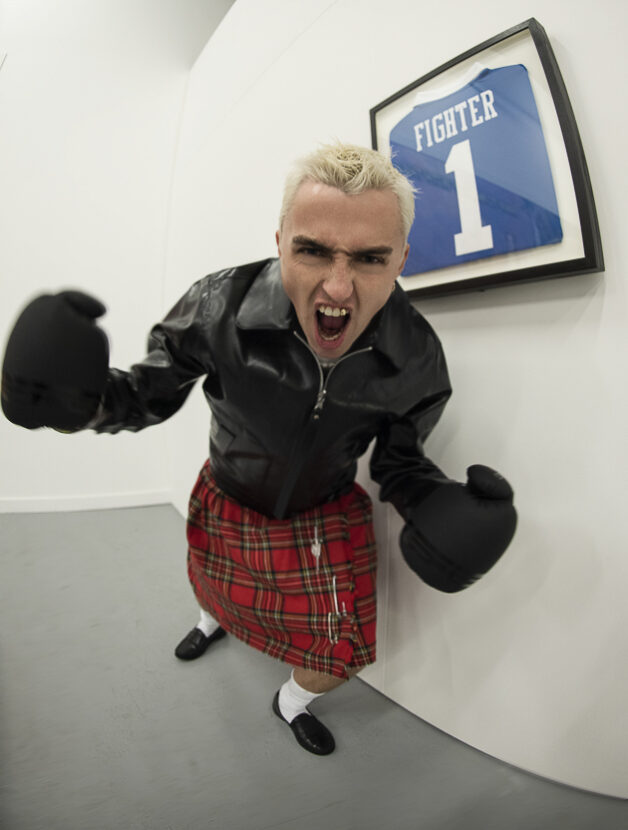
Trackie wears jacket by La Fetiche
I was interested to read that you produced much of the work in the exhibition in response to the physical attributes of Govan Project Space and its location. Do you find that you create not only in response to your experiences in Glasgow, but also the way the city feels and looks?
I knew for the exhibition I wanted to work on a much larger scale, but I struggled to find a space that could house the planned dovecot, car and billboard. When I heard about the Govan Project Space, I loved their ethos; they are very much community-led and anti-establishment. I liked how they were tucked away in an industrial park in Govan (just across the water from where I grew up) and it just made sense to exhibit in a non-traditional space in a community similar to my own. I think sensory wise, the look, feel, sound and even smell of Glasgow growing up played a role in making this an overall installation. For example, inside the dovecot I decided to include a 50-minute mix made up of chart toppers, pc DJs, adverts and shows from my youth with nods to some of my own queer awakenings. To top it off I planted some Lynx Africa pods inside to give it the full millennial changing room experience.
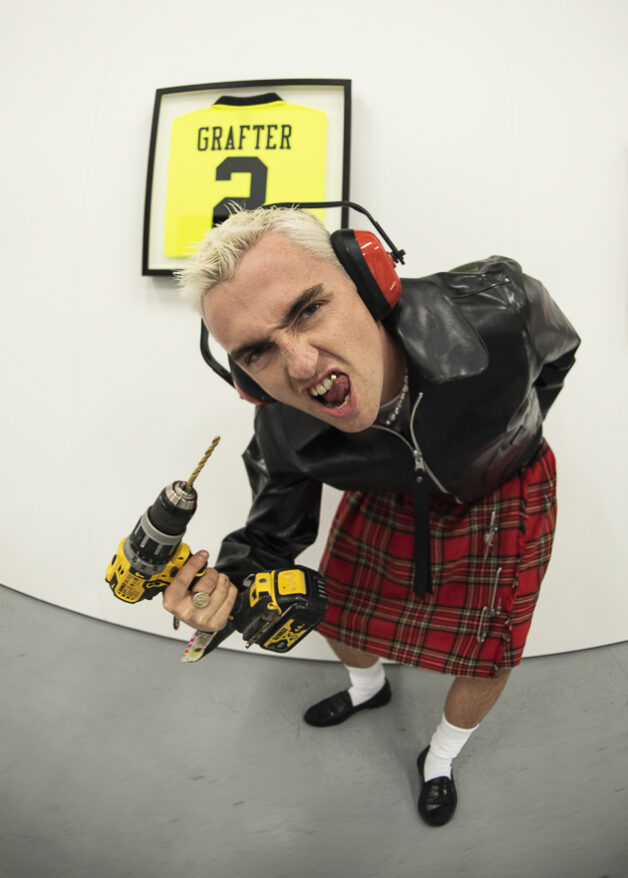
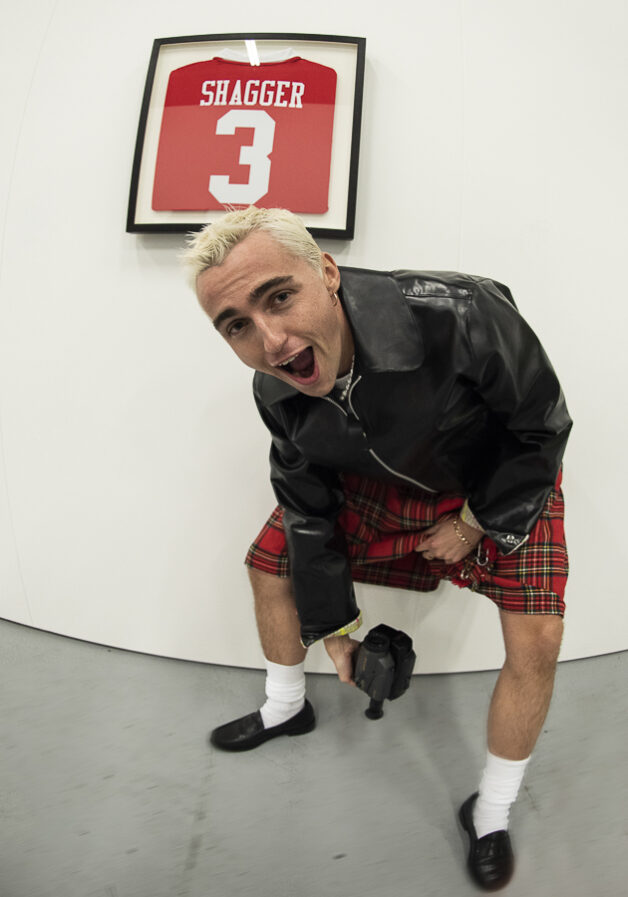
Even though a lot of work in ‘FRUIT’ draws on arguably negative experiences, you clearly have a lot of love for Glasgow. What is it about the city that keeps you inspired?
Glasgow is everything you read about it: cold, grey, hard — but underneath all that it’s got a heart of gold. It’s home. It’s got a rich history in culture. The people are class and the patters even better which is what continues to inspire me, albeit fucking baltic.
Do you have plans to take this exhibition to any other cities?
Next stop London! Keep your eyes peeled.


